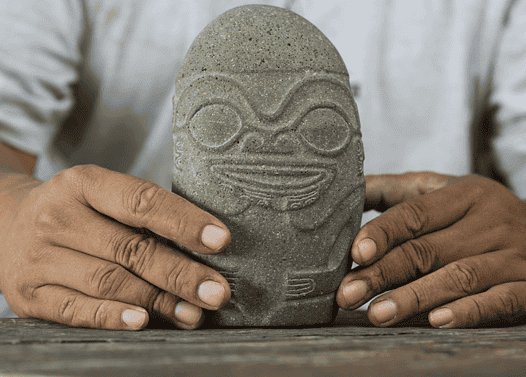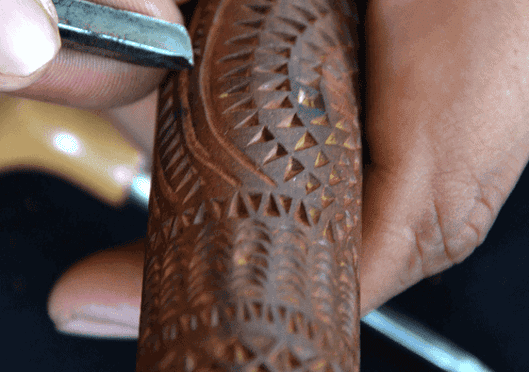Meet Derry, a bone and wood sculptor who keeps Marquesan traditions alive and channels the mana through each of his creations.
Rédaction : Maeva LAUTRET
If you ever pass through Tahiti, there are encounters that stay with you. Derry is one of them. This sculptor and engraver from the Marquesas works bone and wood with a precision that commands respect… and with a lot of heart. His hands tell stories. They transmit. They carry within them what we call mana — that invisible energy connecting people, the land, the ancestors, and tradition.
I went to visit him at his home in Titioro.
A deeply rooted craftsmanship
In Tahiti and Her Islands, sculpture is more than just art — it’s a living memory. It has passed down through the ages, carved in wood, stone, bone, or mother-of-pearl. Every piece once served a purpose: to communicate with the gods, to tell a legend, to signify social rank, or simply to honor the sacred bond between man and nature.
Did you know there’s a very rare volcanic stone that’s also sculpted? It’s called “flower stone” (or garnet phonolite), and it’s found only on Ua Pou in the Marquesas, and in a few other very remote places in the world. A true mineral treasure.
Mana, symbols, and soul-infused materials
Materials aren’t chosen at random.
- Toa wood (ironwood) symbolizes strength.
- Bone carries the memory of the ancestors.
- Mother-of-pearl reflects the lagoon’s light.
- Pig or shark teeth, horn — all these materials give meaning to the jewelry they become.
And what about the engraved motifs? Spirals, tiki figures, sacred lines… each design carries a message, a connection to the past, to the sacred, to nature. That’s where mana comes to life.


From Sacred Art to Everyday Objects
In the past, sculptures adorned marae (temples), ceremonial paddles, weapons, status jewelry, and outrigger canoes… Each piece served as a spiritual vessel. Today, this art is also expressed through objects you can take with you: umete (wooden bowls), jewelry, tiki figures, lamps, and wall decorations.
When visiting the islands — whether it’s Tahiti, Huahine, Raiatea, Taha’a, Bora Bora, or Maupiti — don’t miss the chance to stop by a local market or exhibition. You’ll discover handmade pieces that embody the living soul of Polynesian culture.
Passing on the Craft, Keeping History Alive
Even today, this artistic tradition is very much alive, thanks to places like the Centre des Métiers d’Art in Papeete, where young Polynesians learn to sculpt, engrave, paint — guided by master artisans.
Artists like Derry give new voice to these ancestral skills. They don’t merely imitate; they reinterpret with respect and humility. And in every gesture, in the depth of each piece, flows a power that can’t be seen — but deeply felt: mana.
🌐 Discover more Polynesian craftsmanship on our ANOE website
🔗 See his creations on Facebook: Créations Keavau
About the author
Maeva LAUTRET Driven by her love of words and a deep connection to the culture of Fenua, Maeva writes meaningful, gentle, and authentic stories for anoe-tahiti.com.
“I love words that feel right words that resonate. Telling beautiful stories means stirring emotions. And emotion is the bridge between beauty and truth.”
REDSOYU agency

